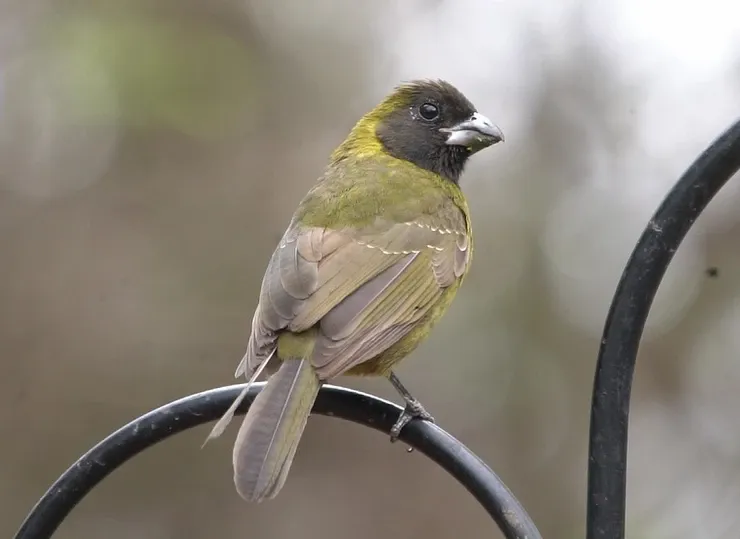LRGV Day Trips

Today was slated as just a “relaxed and easy” birding day, but at the last minute decided to do a Big Day, with the itinerary based on places where potential year birds were reported on eBird. Said itinerary included Estero Llano Grande State Park an hour before dawn (which I always do in order to bag the night birds), the Progresso Silos for a crack at the Yellow-headed Blackbirds, Frontera Audubon Thicket for migrants, Delta Lake for Hudsonian Godwits and other shorebirds, Fireman’s Park in McAllen for the lingering Greater White-fronted Goose, Quinta Mazatlan for migrants (the reported Flame-colored Tanager was probably long gone), Old Hidalgo Pumphouse for a reported Groove-billed Ani (and I always get the Monk Parakeets there, whether they’re reported or not), and Santa Ana NWR. It would turn out to be mostly overcast all day, which made for a pleasant day out even though it got up to 91 later in the afternoon. Started the morning with the neighborhood Purple Martins (1) gurgling as I packed the car before heading to Estero. Once at Estero the Pauraques (2) were pretty easy to pick up, and a Chuck-will’s-widow (3) sang from the park host area. Checked the restroom lights in the Tropical Zone for moths, then settled in at the “Picnic Table Feeders” near Pauraque Hall to wait in the dawn. Black-bellied Whistling Ducks (4) flew overhead in the dark, and Black-necked Stilts (5) called from somewhere where there was water! Early-morning songsters included White-winged (6), White-tipped (7), and Mourning Doves (8), a Mockingbird (9), and Cardinals (10), and as it got lighter Chachalacas (11), Golden-fronted Woodpeckers (12), a Clay-colored Thrush (13), Brown-crested Flycatcher (14), Couch’s Kingbirds (15), Kiskadees (16), Green Jays (17), Black-crested Titmice (18), a Long-billed Thrasher (19), Carolina Wrens (20), and Olive Sparrows (21) joined the chorus. A couple of Hooded Orioles (22) “wheeped” on the way out, and a five-minute vigil at the Green Jay Drip didn’t yield the Crimson-collared Grosbeak, but a Yellow-billed Cuckoo (23) sang, which was good for the year!
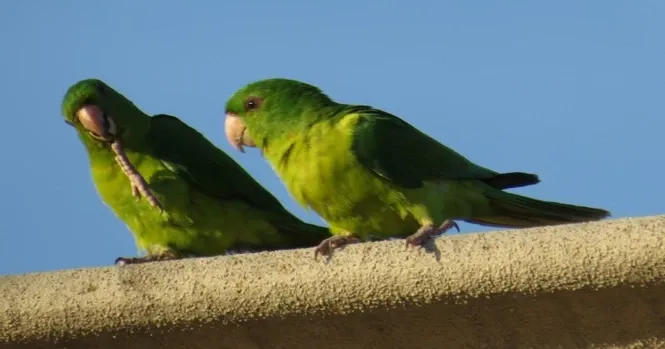
4/30/21 Was a little concerned about getting rained out this day, but thankfully it was dry when I set out (driving in the dark with my eyesight is bad enough, but driving in the dark when it’s raining is terrifying)! As with the Hidalgo County Birdathon, I did things a little differently this time and focused on destinations that were reporting rare (and year) birds, and as it turned out I had to change the “standard” itinerary very little! The first destination is always Resaca de la Palma State Park an hour before dawn for the night birds, and as I turned onto New Carmen Drive logged a Killdeer for the first bird, followed closely by a beenting Common Nighthawk (2). Once parked in my “spot” just outside the main gate, added White-winged Doves (3) tuning up already, and Pauraques (4) in surround-sound! According to the radar, South Padre Island was getting clobbered with a big thunderstorm, and indeed I saw lightning and heard thunder in the distance, but it was nowhere near my location; just close enough to enjoy! The distinctive brat of a flyover Dickcissel (5) was next, followed by a distant Cardinal (6) and the dawn song of a Brown-crested Flycatcher (7). A Black-bellied Whistling Duck (8) called overhead, and as it started getting lighter several Couch’s Kingbirds (9) joined the dawn chorus, followed by Mourning Dove (10), a singing Clay-colored Thrush (11), a raucous Kiskadee (12), a mellow White-tipped Dove (13), some complaining Green Jays (14), a bouncing-ball Olive Sparrow (15), and a Golden-fronted Woodpecker (16) pretty close to sunrise (not that you could tell; in fact, I got spit on enough to take up the vigil from inside the car)! By sunrise the dripping had let up, so I took a quick walk into the “real” parking area and behind the visitor’s center as an American Robin had been reported (and indeed they had several over the winter), but no sign of that bird, nor of the Turkeys that are often back there, but did add Black-crested Titmouse (17), Mockingbird (18), chuckling Chachalacas (19), and a Long-billed Thrasher (20) to the list. A Great-tailed Grackle (21) flew over just before I left, and on the way to the freeway added a Caracara (22) on a pole, an Eastern Meadowlark (23) and Red-winged Blackbird (24) in the fields along New Carmen, some Barn Swallows (25) swooping across Olmito Road, and a Scissor-tailed Flycatcher (26) on the wire. The next destination (which was a departure from tradition) was the UTRGV campus in Brownsville, at which a Yellow-rumped Warbler was reported. Truthfully, I didn’t have high hopes of finding that one, either, but now that I had visited the area several times I felt more comfortable going there by myself, and it turned out to be a great substitution (as I had skipped Sabal Palm Sanctuary in favor of it)! A Starling (27) wasn’t all that exciting, but singing Carolina Wrens (28) were, and the place was lousy with feral Muscovies (29) flying all over! A Tropical Kingbird (30) tittered, and the resaca right there at the bookstore had a Green Heron (31), a Spotted Sandpiper (32), and Long-billed Dowitchers (33). Heading over to the “Black Hawk” resaca, a House Finch (34) sang (a good bird to pick up, as they’re rather rare in the Valley), as well as a Common Yellowthroat (35). A Yellow Warbler (36) chirped from one of the riparian trees there, making me wonder if he was a true migrant or one of the several birds that had overwintered there! But one of the most unexpected birds of the day went screeching over low: two Green Parakeets (37)! While looking for what I thought was another warbler that zipped into a tree, my bins landed on a Buff-bellied Hummingbird (38), and on the bridge picked up several Snowy Egrets (39), a couple of Roseate Spoonbills (40), a Little Blue Heron (41), a few Great Egrets (42), and a pair of Blue-winged Teal (43). On the way back a Painted Bunting (44) sang from the vegetation, and a Least Sandpiper (45) fed in the mud below the bridge. Back at the Bookstore Resaca a second look produced Solitary (46) and Stilt Sandpipers (47).
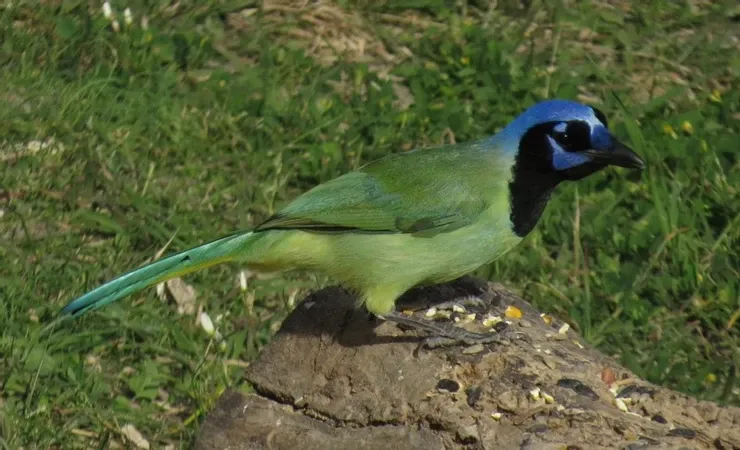
4/24/21 Was hoping that my first bird would be the Lesser Nighthawks that nest on our roof, but that honor actually went to the singing Tropical Kingbird somewhere in the dark! On the way to the freeway, the noisy cacophony of the Great-tailed Grackles (2) and the chirping of the House Sparrows (2) were next. As usual, the first bird to get added to the list after arriving at Bentsen Rio Grande State Park an hour before dawn (I actually got there earlier than that) was a singing White-winged Dove (4) and surprisingly a Collared Dove (5)! Heading in, the many Pauraques (6) were tuning up, as well as a Mockingbird (7). Eventually I heard a “McCall’s” Screech Owl (8) well enough to be convinced I wasn’t hearing a distant Cane Toad! ☺ I startled some Mourning Doves (9) as I made my way to the Eagle Pond bench to sit for a while, adding a Great Horned Owl (10), Cardinal (11), and flyover Black-bellied Whistling Ducks (12). After the Pauraques quit I decided to make my way to the resaca, and was disappointed that I had not only not heard any Elf Owls, but Chuck-will’s-widows as well, when I suddenly heard one singing in the distance (the Chuck, that is – 13)! Down at the resaca the following players brought in the dawn: Brown-crested Flycatcher (14), Yellowthroat (15), Common Gallinule (16), Couch’s Kingbird (17), Pied-billed Grebe (18), and Olive Sparrow (19). Some Red-winged Blackbirds (20) flew over with some grackles, and several Coots (21) became visible on the water. A Kiskadee (22) yelled from somewhere, and was surprised to hear a Roadrunner (23) singing (although I shouldn’t be as they do occur there)! A Golden-fronted Woodpecker (24) announced the sunrise as did a Brown-headed Cowbird (25), and before I left I spotted an Anhinga (26) down a ways. On the way out I was serenaded by an Altamira Oriole (27), a couple of Yellow-billed Cuckoos (28 – always a delight to hear), a chirping Verdin (29), a flyover Dickcissel (30), a coke-bottle White-tipped Dove (31), and a guttural Long-billed Thrasher (32). A Gray Hawk (33) whistled back towards the resaca, and a Baltimore Oriole (34) chattered from a tree. A Ladder-backed Woodpecker (35) laughed, and some Chachalacas (36) got upset about something, but weren’t chorusing yet (that would happen once I got to the levee ☺). A Clay-colored Thrush (37) sang sadly and then did its querulous call, and at the canal the Cave Swallows (38) voiced their annoyance! Closer to the buildings the Inca Doves (39) were tuning up, as were the Green Jays (40), and a Green Heron (41) “scalped” unseen from somewhere. Slowly cruised Old Military Highway on my way to Anzalduas to see what I could pick up along the back roads; Eastern Meadowlarks (42) were singing from the fields, and a Blue Grosbeak (43) sang from the National Butterfly Center property. Picked up Starlings (44) on the wires, as well as a chattering Scissor-tailed Flycatcher (45). Now that the levee is closed to traffic, I returned to the truly “old” Military Highway that’s a dirt road through the woods (but in great shape now), and picked up a singing House Wren (46), White-eyed Vireo (47), Black-crested Titmouse (48), and a “wheeping” Hooded Oriole (49). Once back onto the pavement I made a right on FM 494 towards Anzalduas and picked up a Lark Sparrow (50) on a wire, a flyover Caracara (51), a pair of Harris’ Hawks (52) on poles, and a single Rough-winged Swallow (53) on a wire near the Academy. A Loggerhead Shrike (54) greeted me on the wire when I made the turn on the entrance road, while a pair of Mottled Ducks (55) flew over the road. A nice Swainson’s Hawk (56) posed on a dead tree, and spotted a couple of Killdeer (57) coming over the levee and driving over the spillway. Heard Laughing Gulls (58) out one window and a singing Marsh Wren (59) out the other! Once past the entrance office I noticed a mess of birds out in the river, so even though I suspected any Sprague’s Pipits were long gone, I parked and hiked across the field to get closer to the river birds; amongst them were a Great Blue Heron (60), a Great Egret (61), a couple of Shovelers (62), and even more surprising at this late date, a pair of Lesser Scaup (63)! (Ebird, liked them, though… ☺) Blue-winged Teal (64) were easy to pick out, whereas a pair of beat-up Gadwall (65) were a little harder to discern save for their tell-tale white speculum patch! Had side-by-side Double-crested (66) and Neotropic Cormorants (67), swooping Barn Swallows (68), and a complaining Forster’s Tern (69)! On the island was a subadult Black-crowned Night Heron (70) trying to hide, and as I walked back to the car, I couldn’t believe it: an American Pipit (71) called overhead with its distinctive, sweet pipit call! (EBird did not like that one! ☺) Continuing the loop in the car, a Tricolored Heron (72) flew by in the distance, and the resident Osprey (73) perched in a lonely tree in the picnic area. A sparse tree in front of me looked like it might have had waxwings in it (that turned out to be leaves), but even more surprising was a female Yellow-headed Blackbird (74)! Stopped at the dam to get the requisite nesting Cliff Swallows (75) and Rock Pigeons (76), and while pausing near the maintenance shack to eat half a steak sandwich, logged a Turkey Vulture (77), a Bronzed Cowbird (78) in a tree, a distant Beardless Tyrannulet (79) doing its dear dear dear song, and a fly-by feral Muscovy (80 – yeah, I know that’s pushing it…). On the way out logged a Curve-billed Thrasher (81) doing its whee-WHEET! call on the fly.
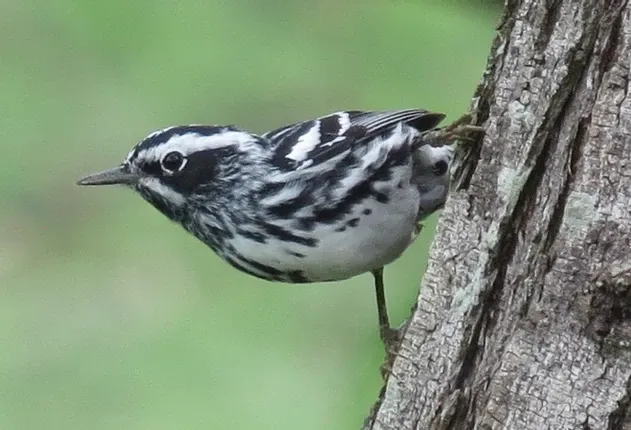
[Ed. Note: This was one day out of two weeks that we had some visiting Brits over, the goal being to see (and/or photograph) as many species as possible while in the Valley!] Local guide Michael Marsden had taken our British guests Sally, Mike, and another Brit named Tim out to the Island on Sunday after a strong cold front Saturday night promised to down some migrants, and they had had a marvelous time! But the good news was that Michael had recommended they go out again today (and Keith concurred that migrants often hang around up to three days after a good front), and they were certainly game, as was I! Tim joined us today as well, so away we went, heading straight to the Convention Centre. I dropped them off as parking was tight, and after I found a spot, I made my way back by way of the “circle bushes” (the area within the roundabout drive that is often good on fallout days), and before I met up with the gang I had already logged Blue-headed and Red-eyed Vireo, Rose-breasted Grosbeak, Indigo Bunting, Tennessee Warbler, and a female Scarlet Tanager! When I finally found the crew in the back, they had already found a Bay-breasted and female Cerulean Warbler practically side by side (they got me on the latter but not the former), and Mike was shooting a brilliant Blackburnian Warbler practically at eye level! Baltimore Orioles were all over, as were the Indigo Buntings, and the gang informed me that the bird show was just about as good as yesterday’s but without the crowds! ☺
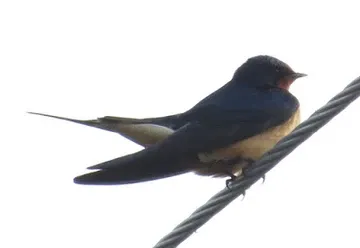
3/26/20 With our normally busy spring guiding season having gone bye-bye with the travel restrictions set in place as a result of the COVID-19 crisis, Birder Patroller Deb was moved to help out and actually hired me to help her with vocalizations! So since Elf Owls had returned to Bentsen (and Whippoorwills were possible), we decided to head into the park an hour before dawn and hear what we could hear! Thankfully the predicted wind advisory was not to materialize until noon, so it was quite pleasant, with a clear, star-studded sky. But things were very quiet to start: we did pick up a distant Great Horned Owl (that we eventually got closer to), and a Cardinal was the first songbird to start tuning up. Ironically it was when the sky started lightening in the east that the Pauraques started sounding off, and at one point we actually spotted one on the road behind us, doing “knee bends” like a Rock Wren, then periodically jumping up to snatch a bug! The “McCall’s” Screech Owls were softly trilling, and thankfully a pair started calling close to the road so Deb could hear them! Sadly, that was it for the night birds; the normal players (particularly Couch’s Kingbirds and Mockingbirds) brought the morning to life, and a Long-billed Thrasher started fussing right next to us, giving off all three common call notes (the smack, the duit, and the faaaaaa!)! A Clay-colored Thrush called, but was a little too distant for Deb to pick out amongst the rising cacophony. Instead of “waiting in the dawn” at the resaca as I do on my Birdathons, we continued on and did the loop through Acacia Circle. We heard a Beardless Tyrannulet do its dear dear dear song near the restrooms, sounding like we were right on top of him, but could we find him?? Of course not! We finally gave up and continued on, when Deb spotted the Gray Hawk in a tree which was undoubtedly the same one we had heard whistling! A White-tailed Kite sailed overhead, but in the gloom Deb couldn’t see any detail. Once in the loop we spotted a Bronzed Cowbird on the wire and a White-winged Dove in a dead tree. We then took the Kiskadee Trail back to the resaca, where we found the trail’s namesake on the nest (there were two nests, in fact)! They had a little spat when one of them tried to bring in some nesting material while the other was still sitting on said nest… A Verdin was chinking brightly (but refused to come out as usual), and heading over to the resaca an Upland Sandpiper called overhead! We logged a pair of Pied-billed Grebes and a distant Anhinga; Deb spotted a Great Blue Heron go past, and a Great Egret also flew over the road at one point.

